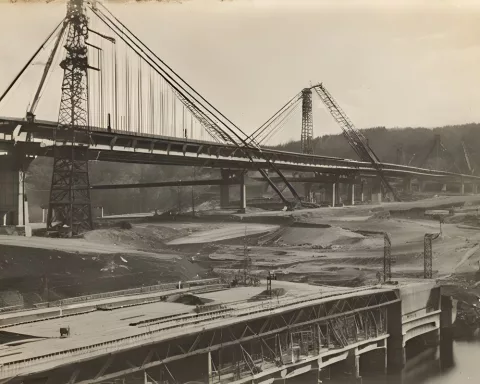The South African National Assembly made important decisions in a demonstration of democratic governance. Six commissioners were appointed to the South African Human Rights Commission after a thorough selection process, and a report on Flood Disaster Relief and Recovery was endorsed, emphasizing the need to prioritize climate change in all government-led flood disaster responses. The Assembly’s decisions reflect a commitment to human rights and proactive management of climate-induced disasters. The recommendations are now under review by the President and the NCOP.
The South African National Assembly appointed six commissioners to the South African Human Rights Commission, filling essential vacancies. The Assembly shortlisted 13 candidates and evaluated their credentials through an intensive selection procedure. They also endorsed a report on Flood Disaster Relief and Recovery, focusing on prioritizing climate change in all government-led flood disaster responses. The recommendations made by the Assembly are now under review by the President and the NCOP.
In a significant demonstration of democratic governance, the South African National Assembly conducted a plenary session, casting their votes on critical national issues. The decisions made by the Assembly exuded a sense of urgency and dedication to justice. They aimed at addressing essential vacancies in the South African Human Rights Commission and implementing a strong and effective response to flood disaster relief.
South African Human Rights Commission: Filling the Void
Utilizing the constitutional powers granted to them under section 194(4), the National Assembly took steps to appoint six commissioners to the South African Human Rights Commission (SAHRC). These vacancies occurred following one member’s departure and the conclusion of five commissioners’ terms. This decision came about after a meticulous and comprehensive process, which began after the SAHRC Chairperson sent two separate messages to the Speaker of the National Assembly. The Chairperson brought attention to the growing workload of the Commission, noting that part-time commissioners were essentially functioning as full-time members despite their employment status.
Recognizing the importance of the SAHRC in maintaining justice and human rights, the National Assembly executed a detailed recruitment process. They shortlisted thirteen candidates, confirmed their credentials, and assessed their skills through an intensive selection procedure. After evaluating the candidates, the Assembly’s Portfolio Committee on Justice and Correctional Services recommended six individuals for both full-time and part-time positions.
Unveiling the New Commissioners
The proposed full-time Commissioners include Mr AC Nissen, Ms ENB Khwinana, Dr WH Boshoff, and Prof. T Madlingozi, while Adv S Makoasha and Mr AA Gungubele were chosen for the part-time roles. Importantly, the Assembly nominated Mr AC Nissen as the Commission’s Chairperson, with his term, like all others, set to last seven years. These nominations, which are a testament to the democratic process, are currently pending the President’s consent.
Addressing Disaster Relief and Recovery
Alongside the SAHRC appointments, the National Assembly endorsed the Ad Hoc Joint Committee’s report on Flood Disaster Relief and Recovery, taking proactive and tangible steps to lessen the impacts of floods. This report, resulting from the destructive floods that struck various provinces in 2022 and 2023, comprises a host of recommendations aimed at strengthening future disaster responses and managing the severe weather events triggered by climate change.
The Assembly focused on the report’s recommendation to prioritize climate change in all government-led flood disaster responses. They emphasized the need for the national government to convert disaster funds into indirect grants, empowering local municipalities to better manage the crisis. The Assembly also stressed the significance of focusing on municipal infrastructure maintenance, particularly stormwater drainage systems and culverts, especially before the start of the rainy seasons.
Critical Decisions Await Approval
The National Assembly’s actions, while meticulous, serve dual purposes. They reflect a commitment to human rights by ensuring the continued operation of the SAHRC. Simultaneously, they exhibit a proactive and adaptable approach towards climate-induced disasters. Therefore, the Assembly’s decisions signify not just the strategic filling of SAHRC vacancies, but also the proactive and strategic management of climate change-induced disasters. The recommendations made by the Assembly are now under the President and the NCOP’s review, marking the next phase in these vital national procedures.
What decisions were made by the South African National Assembly?
The South African National Assembly made two significant decisions. Firstly, they appointed six commissioners to the South African Human Rights Commission after a thorough selection process. Secondly, they endorsed a report on Flood Disaster Relief and Recovery, emphasizing the need to prioritize climate change in all government-led flood disaster responses.
What vacancies in the South African Human Rights Commission were filled?
The National Assembly filled essential vacancies in the South African Human Rights Commission following one member’s departure and the conclusion of five commissioners’ terms.
How were the new commissioners selected?
The National Assembly shortlisted 13 candidates and evaluated their credentials through an intensive selection procedure. They recommended six individuals for both full-time and part-time positions, with Mr AC Nissen nominated as the Commission’s Chairperson.
What was the report on Flood Disaster Relief and Recovery about?
The report on Flood Disaster Relief and Recovery, endorsed by the National Assembly, focused on prioritizing climate change in all government-led flood disaster responses. It comprised a host of recommendations aimed at strengthening future disaster responses and managing the severe weather events triggered by climate change.
What actions did the National Assembly emphasize in managing climate-induced disasters?
The National Assembly emphasized the need for the national government to convert disaster funds into indirect grants, empowering local municipalities to better manage the crisis. They also stressed the significance of focusing on municipal infrastructure maintenance, particularly stormwater drainage systems and culverts, especially before the start of the rainy seasons.
What happens next with the National Assembly’s decisions?
The recommendations made by the National Assembly are now under review by the President and the NCOP, marking the next phase in these vital national procedures.












